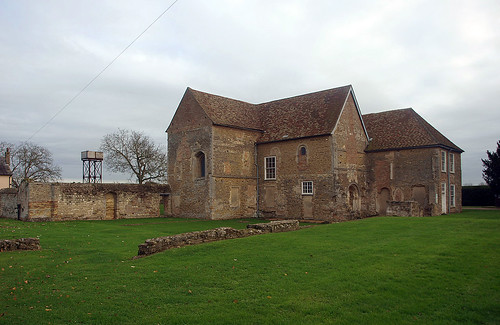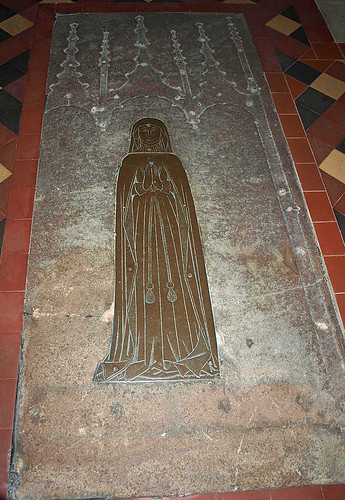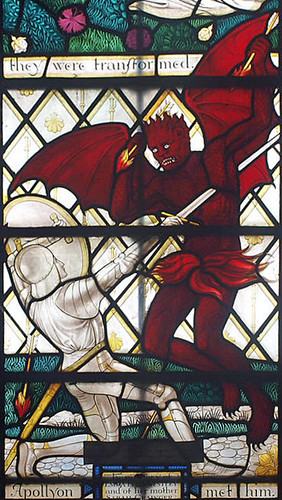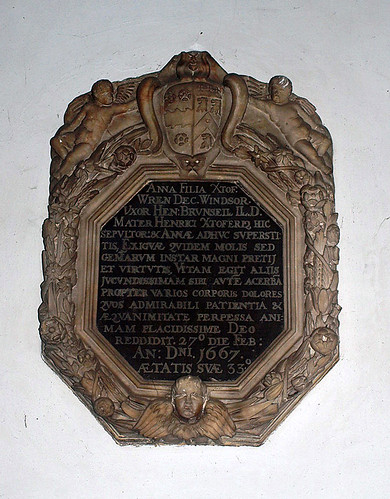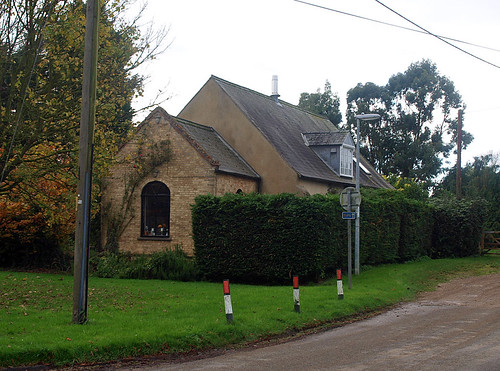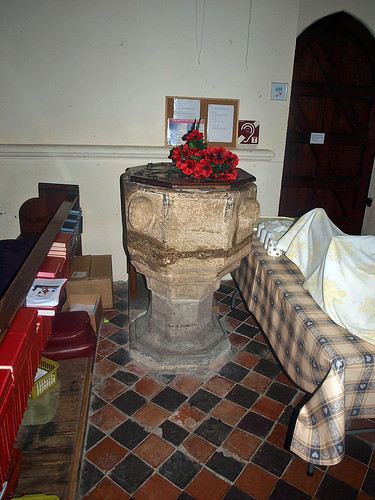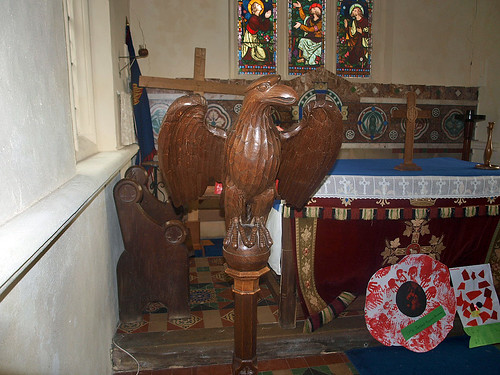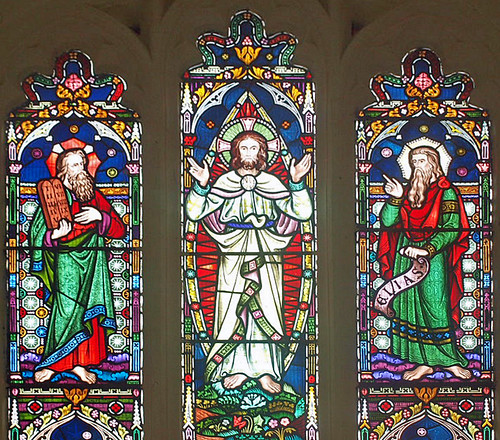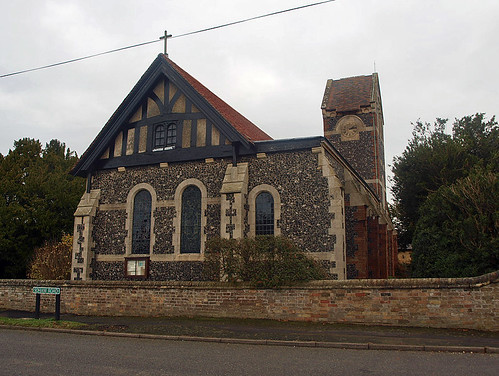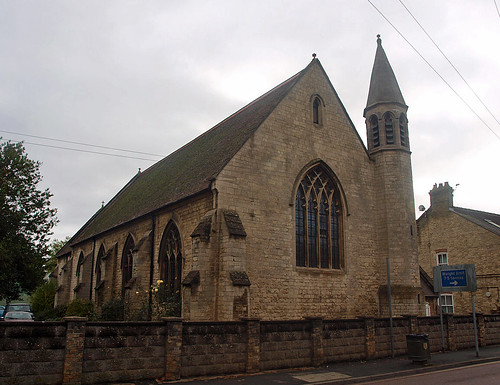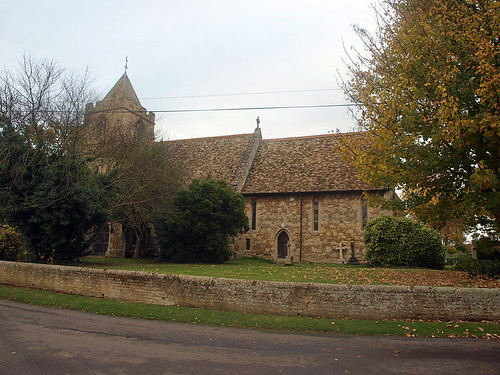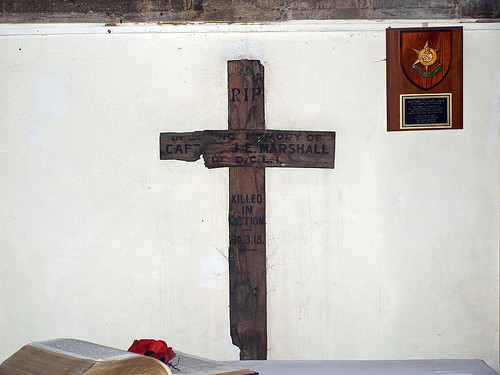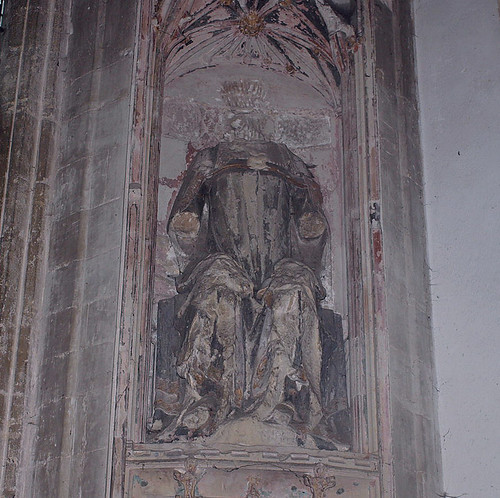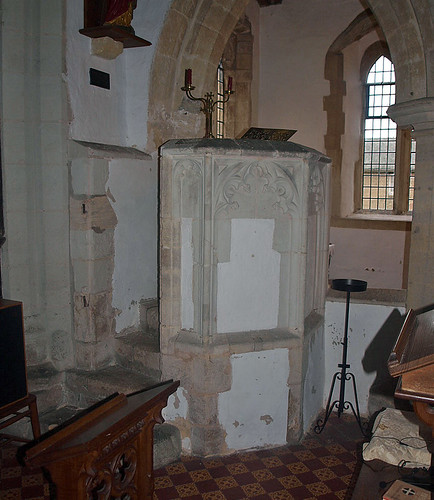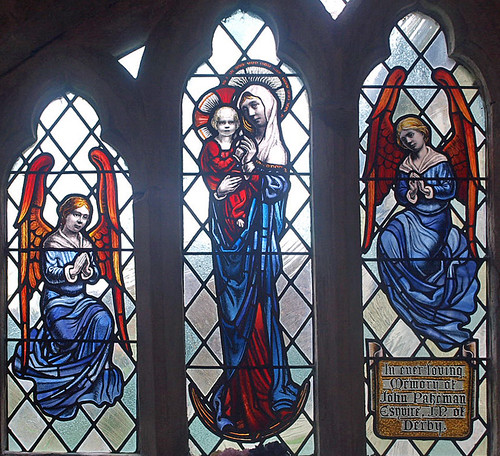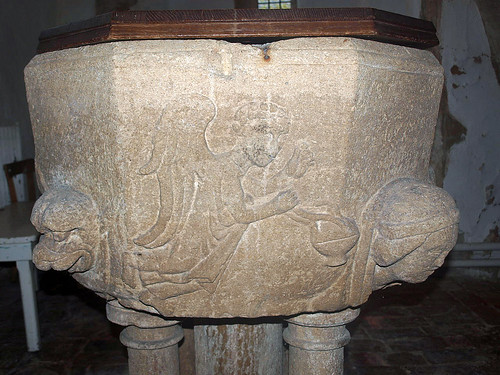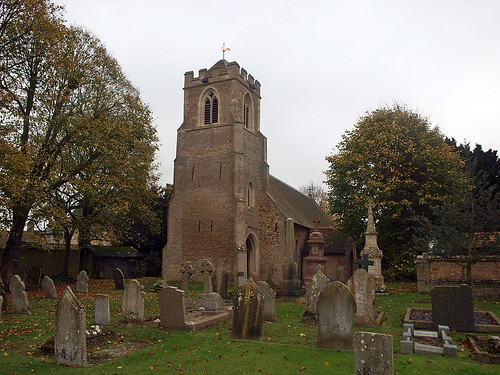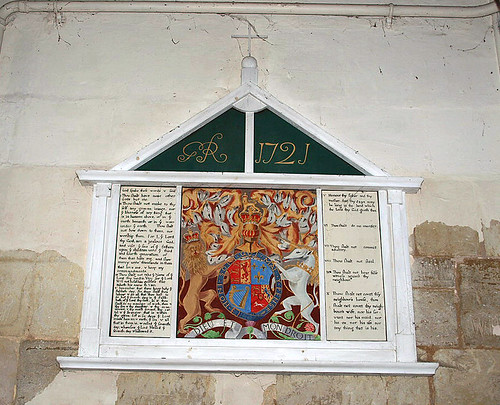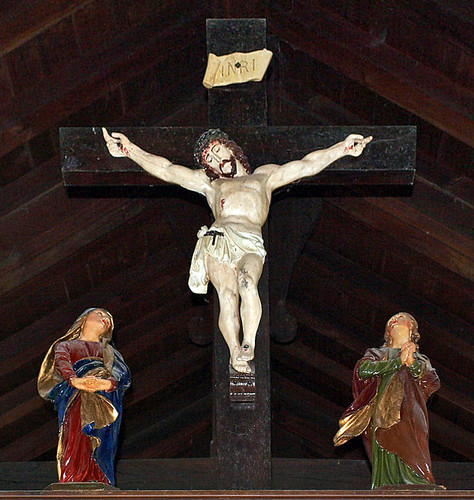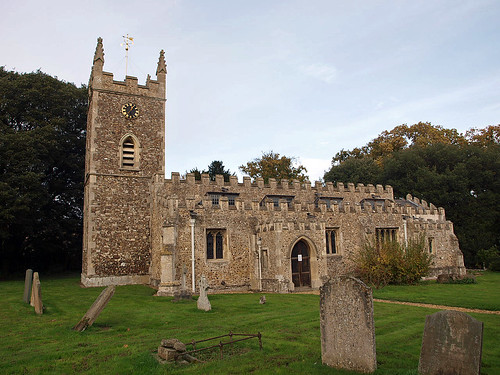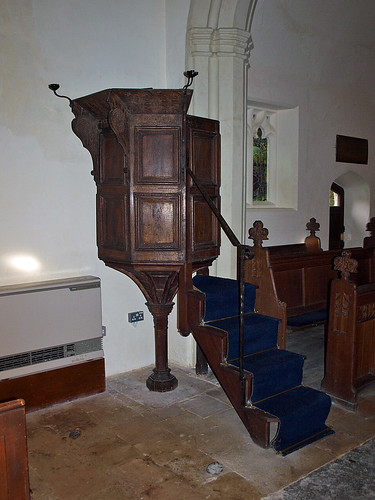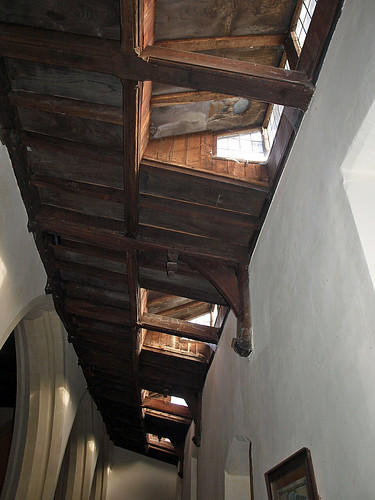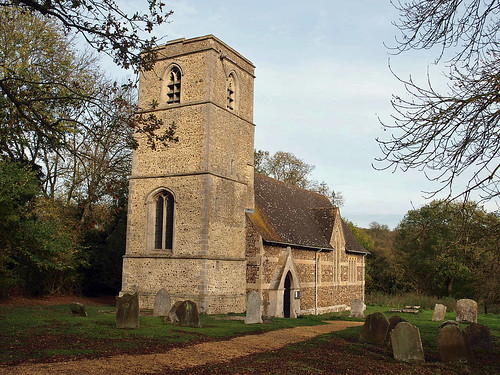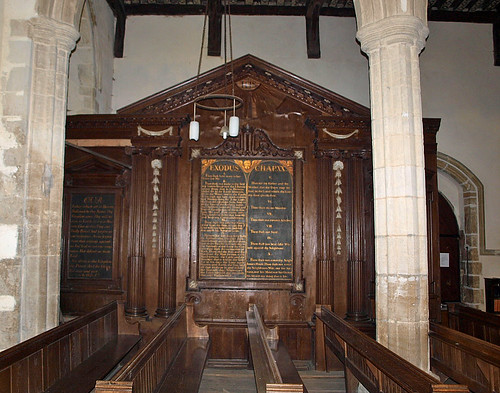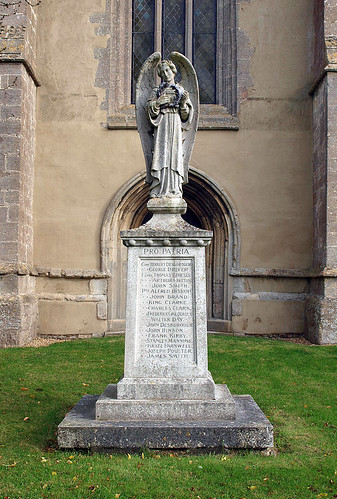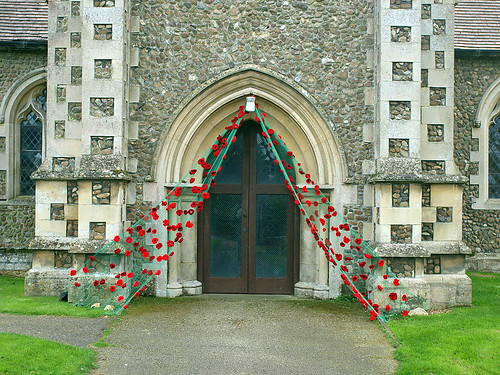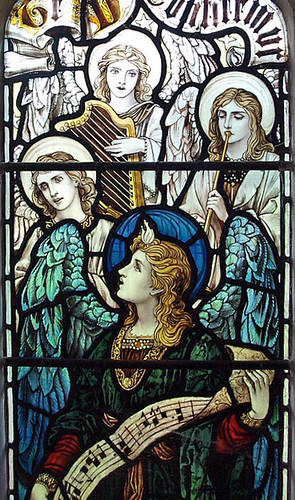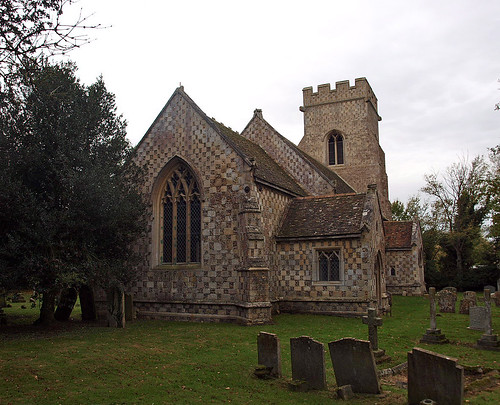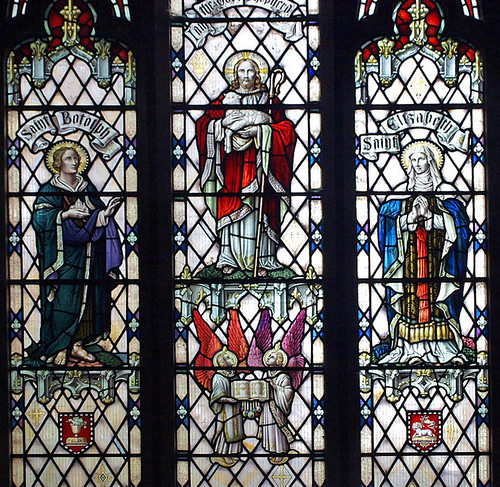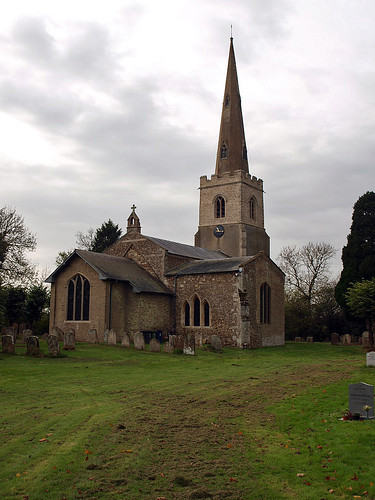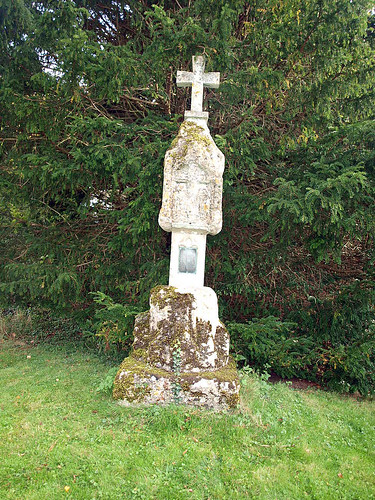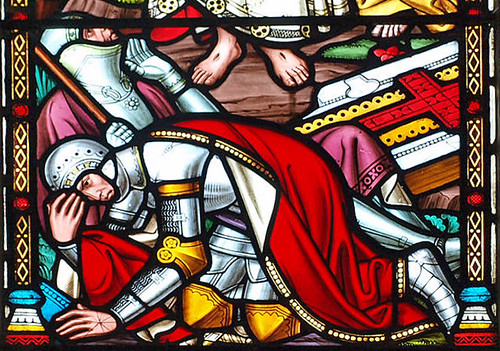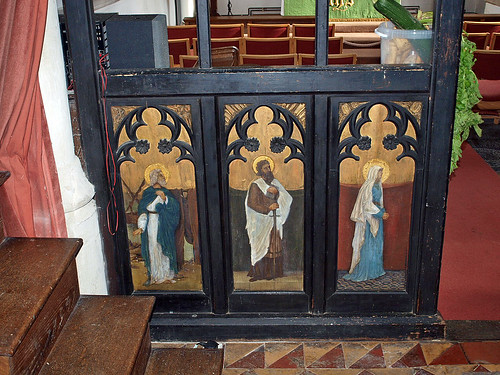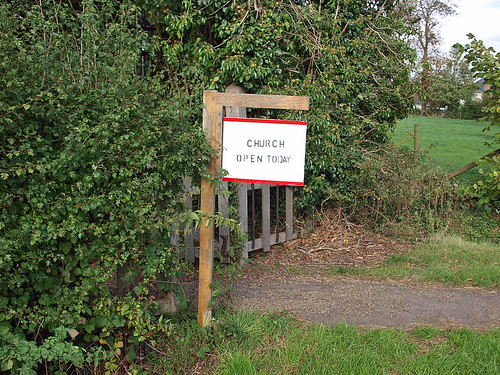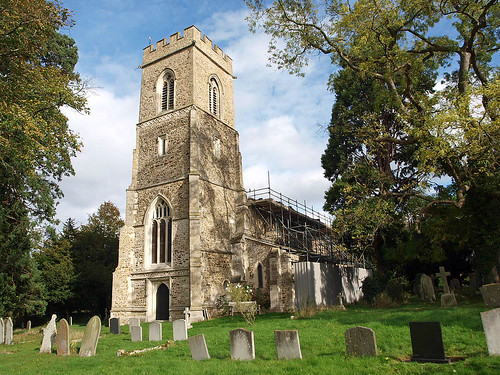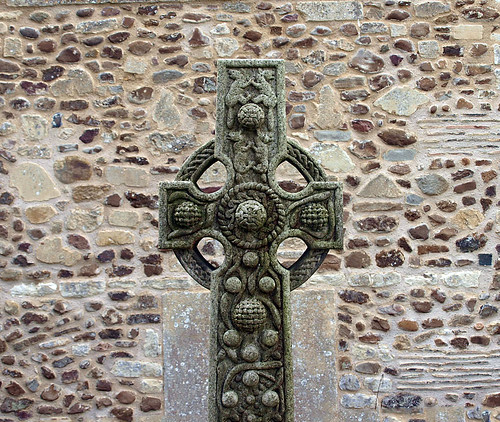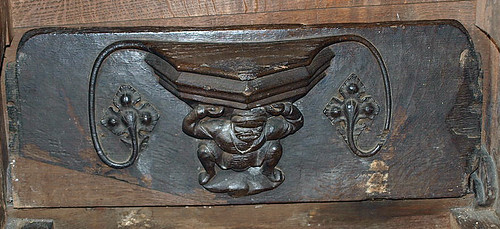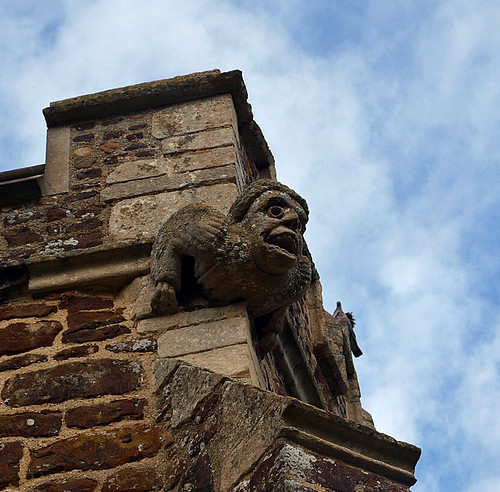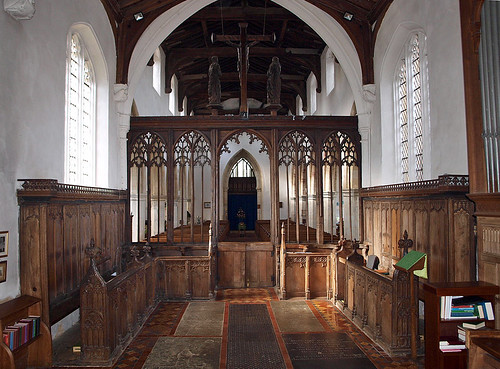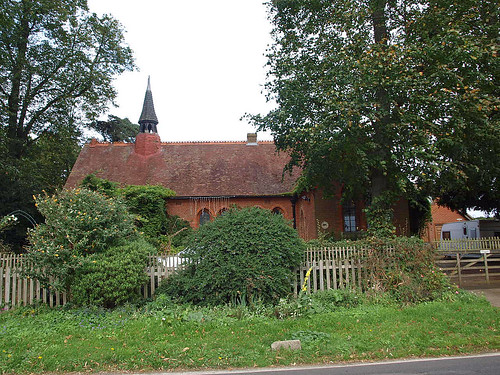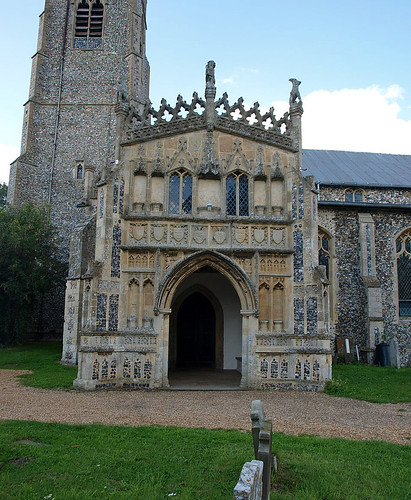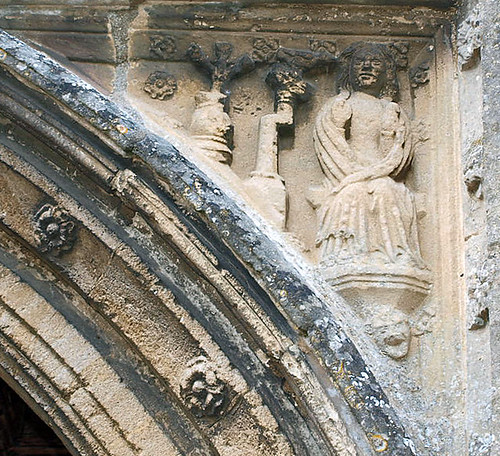St Lawrence, open, was my church of the day. Architecturally and physically it is all over the place but in a positively delightful and inside it is full of interest. Truly lovely.
ST LAURENCE. A secluded church, much smaller than the trees surrounding it. The inside more impressive than the outside: broad nave of three bays with arcade of octagonal piers and arches with two wave mouldings, probably C14. Chancel arch and tower arch of the same design. The clerestory poses a problem. It is not in Cole’s drawing at the British Museum, but on the other hand one of the tiebeams of the roof above the clerestory has the date 1695 carved on it. The chancel holds some evidence of the C13 - one lancet window. Most other windows Perp. The small W tower seems also Perp. - BRASSES. Margaret Peyton d 1414 (15in. figure) and John Peyton d 1520 (10in. figure).
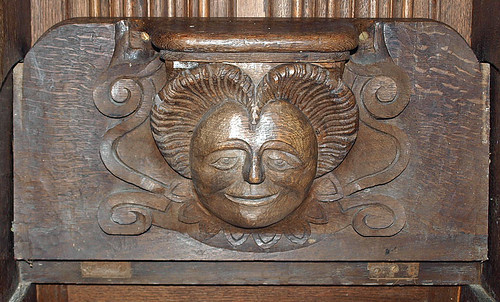
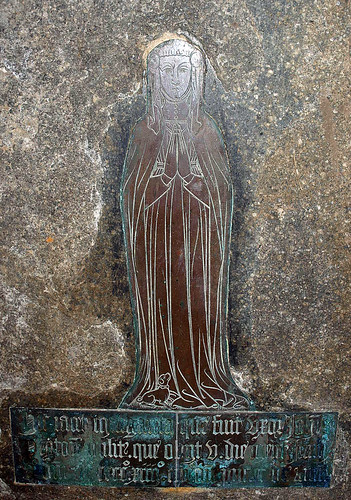
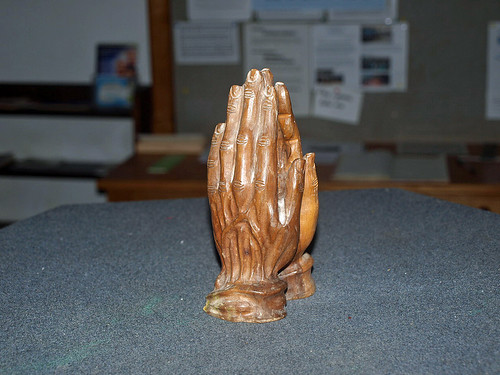
WICKEN. We are in the presence of mighty names, and the thrill of history here, where all may see the fen as Hereward the Wake saw it, as the Saxon monks of Thorney Abbey knew it when they cut their reeds from it, as the first Bishops of Ely encountered it when laying a causeway from isle to isle across it. Black dykes flow between the acres of thick impassable rushes, the reed warblers trill among them from dawn to dusk in spring, the late cuckoo flits over them when autumn approaches, and Montagu’s Harriers, the eagles of the marsh, flap heavily from bog to dyke in search of prey. Rare bird visitants are finding in Wicken and in Burwell Fen a sanctuary the National Trust preserves for them and us, and here we may see one of the rare expanses of a vanished or vanishing England.
A mile from the village is Spinney farmhouse, built from the stones of the ancient priory, and once the home of one who can only narrowly have missed a great page in history, for he was the best of all Oliver Cromwell’s sons, Henry. Here when the Stuarts came back and he had lost his lands he came to settle down, and the story is told that Charles the Second, returning from Newmarket, took it into his mind to visit Henry Cromwell at this farmhouse. He found him farming contentedly, and a lord who was with the king thought it a merry jest to seize a pitchfork and carry it before Farmer Cromwell, explaining that he had been mace-bearer when Henry was Lord Lieutenant of Ireland.
Henry Cromwell lies in the little church standing lonely by the wayside, and a brass plate tells us that the oak chancel screen was given in this century in memory of him and his wife Elizabeth. A floor stone under the altar is to Oliver Cromwell’s sister Elizabeth, buried here in 1672, and another stone in the chancel floor has the name of Oliver Cromwell the Protector’s grandson, who was brought here in 1685. Here also were born two other grandsons of Oliver, Richard who died in London in 1687 and William who died in the East Indies in 1662.
There are two dainty treasures in brass, portraits of Margaret Peyton of 1414 in a graceful gown and mantle with a dog at her feet with bells round its neck, and John Peyton of 1520, a slim figure with long hair wearing a simple mantle with loose sleeves.
The church has little to see except its memorials. It is chiefly 15th century with something of the 13th, and is a simple structure with a tower crowned by battlements and pinnacles. It was the first church known to Isaac Barrow, whose nephew taught Isaac Newton and is in Poets Corner, and to Andrew Fuller, first secretary of the Baptist Missionary Society, both of whom were born here.
The Best of Cromwell’s Sons
HENRY CROMWELL was laid to rest here on March 22, 1674, He has been overshadowed in history by his renowned father, by his brother Richard, who failed to hold the position of Lord Protector to which their father had nominated him, and by the earlier Thomas Cromwell, Earl of Essex; but Henry Cromwell was decidedly a man of mark who deserved lasting respect. Holding high office, in situations of great difficulty, he invariably showed himself to be a man of strong character, sound judgment, breadth of outlook, fitted for fine national service, and, as Carlyle calls him, “really an honourable figure.”
He was 14 years old when the Civil War began. When he was 19 he was serving as a captain under Fairfax and later under his father. When he was 22 he was sent as a colonel with reinforcements to Ireland, and took part in the final movements of his father’s campaign there. Three years later he was nominated as a representative of Ireland in the Barebones parliament, and next year was sent to Ireland again to report on the new Government there.
It was a delicate piece of work, for the Lord Deputy at the head of the Government was his own brother-in-law, Lord Fleetwood, who had married Bridget Cromwell, Henry’s sister, and Henry came to the conclusion that the army was playing too big a part in the government of the country and that it would be an advantage to have Fleetwood recalled to England. He suggested this course to his father who was now the Lord Protector, and Oliver, in one of the most charming of his letters, responded by explaining to Fleetwood that he needed his assistance in England. Fleetwood accordingly left Ireland, though for some time he retained his appointment nominally as Lord Deputy in Ireland. Henry Cromwell became Commander-in-Chief of the Army in Ireland and a member of the Council. He believed in Ireland having a more constitutional form of government and was much hampered by the Parliamentary generals who favoured domination by the Army. More than once he offered his resignation, but spontaneous protests from Ireland reached the Protector, who eventually agreed that his son should be the Lord Deputy there. The fact is that Henry was a popular Englishman in Ireland. He was voted land worth £1500 a year, but declined to receive it on the ground that Ireland was poor.
When a movement was started to make Oliver king, Henry urged his father not to accept that “gaudy feather in the hat of authority.” He resisted attempts to tax exhorbitantly those who had Royalist sympathies. When the Protector died Henry welcomed the succession of his brother Richard. He was himself appointed Governor-General of Ireland, but wished to resign and return to England to express his views on Irish affairs. He was openly opposed to the restoration of the Stuarts. When his brother was deposed he resigned his office in Ireland, reported himself to the Council of State in England, and retired into private life, as Carlyle says, “in a very manful, simple, and noble way.” He lost his share of his father’s forfeited estates in England, worth £2000 a year, but was allowed to keep Irish estates worth £600 to £700 a year, which he had purchased.
A number of Royalists, including Clarendon, used their influence to check those who sought vengeance on all who bore the name of Cromwell, and Henry lived quietly for the remaining 14 years of his life at Spinney Abbey, where he died at the age of 46, “a man of real insight, veracity, and resolution (said Carlyle), very fit for such service” as he had undertaken. He entered the war, as he himself said, “by natural duty to his father.” While he was quite young he found himself bearing heavy responsibilities in a land where few men have won untarnished honour, and with sound public spirit and independence of judgment he curbed the spirit of military despotism, developed no personal ambition, and almost single-handed became a welcomed ruler. It is a rare sight from those troublous times, and betokens a rare man.
